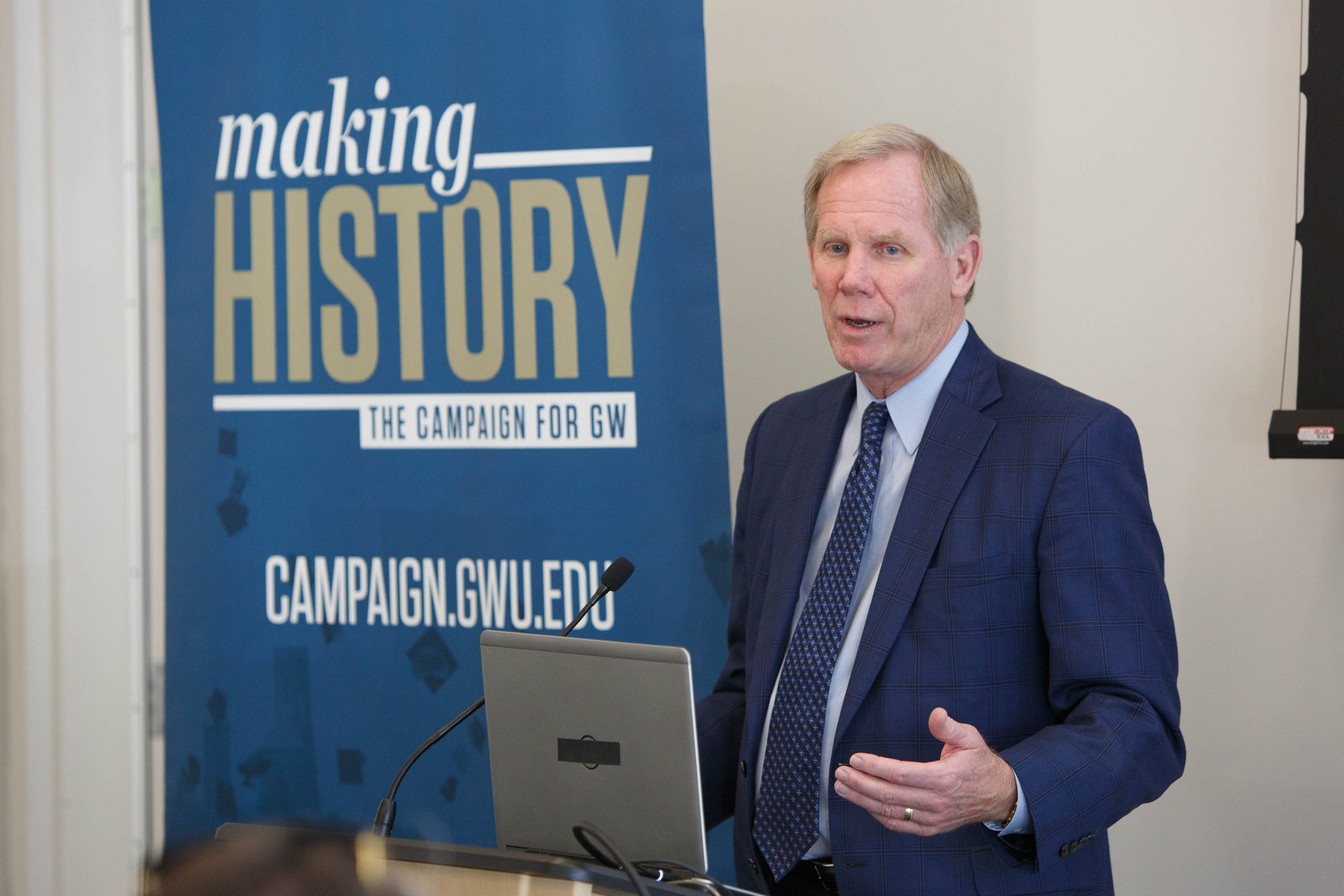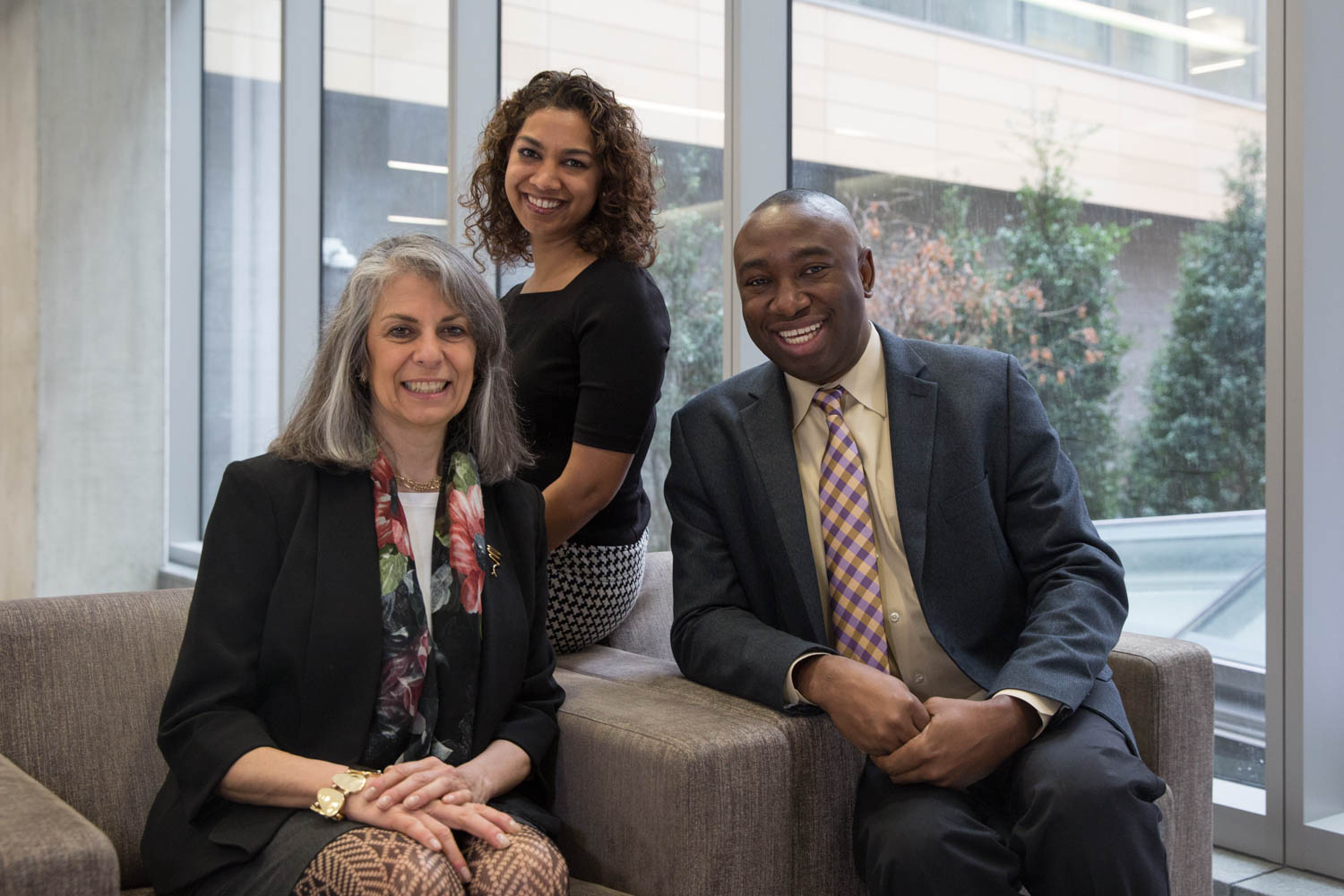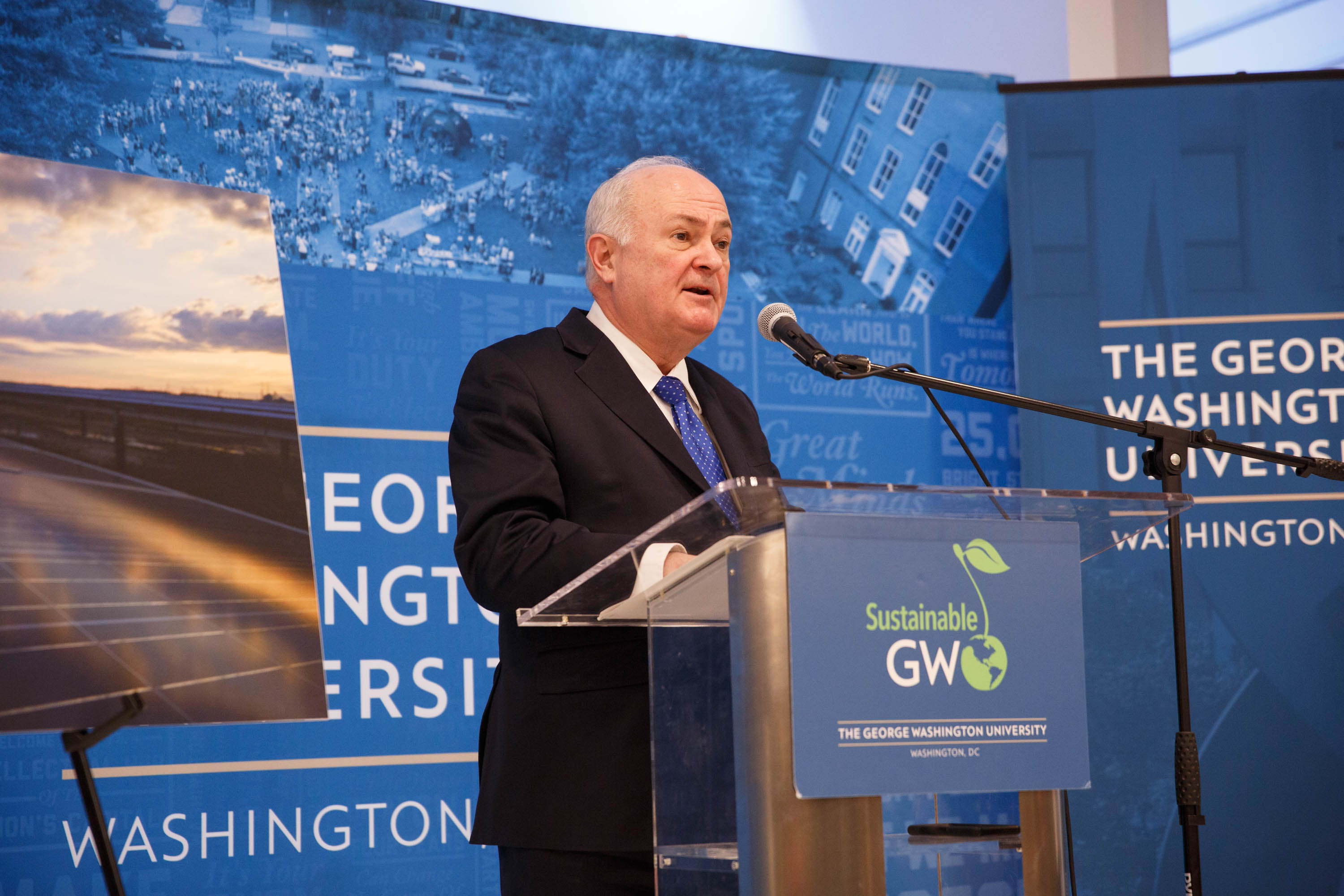By Kristen Mitchell
Researchers developing a method to transform carbon dioxide in the atmosphere into a material that can be used as a lightweight replacement for steel and cement composite received the 2017 Duke Energy Renewables Innovation Fund Award.
The $85,000 award was presented last Tuesday to an interdisciplinary team including Stuart Licht, a chemistry professor in the Columbian College of Arts and Sciences, and Peter LaPuma, associate professor of environmental and occupational health at the Milken Institute School of Public Health.
The Duke Energy Renewables Innovation Fund, established in 2015 with seed funding from Duke Energy Renewables (DER), provides competitive grants to interdisciplinary GW faculty teams to conduct energy-related research. The annual competition is run by the GW Sustainability Collaborative, and a GW-DER team selects awards winners.
Dr. Licht and Dr. LaPuma are collaborating on a process to inexpensively transform carbon dioxide into carbon nanotubes, a strong and lightweight material, from greenhouse gas in the atmosphere and smokestacks. The carbon nanotubes are strong and flexible carbon composites that can be used to build airplanes, cars or bridges and in high-end sports equipment.
“There is a wide and growing market for carbon nanotubes,” Dr. Licht said. “[With this technology] carbon dioxide will become an in-demand resource instead of a greenhouse gas.”
Dr. Licht and Dr. LaPuma—finalists for the $20 million NRG Cosia Carbon XPrize for their breakthrough work—are using the DER award to fund critical equipment necessary to advance their research and help them compete.

Duke executives toured Science and Engineering Hall and interacted with faculty and students before the Duke Energy Renewables Innovation Fund Award presentation. (Photo credit: Nga Le)
Rob Caldwell, president of Duke Energy Renewables and Distributed Energy Technology, was present for the award ceremony. He said institutions like GW that focus on sustainability are pushing the field of renewable energy forward.
“We plan for the long term, and what we’re doing with George Washington University and this research is future-oriented,” he said. “As a business we get caught up in the shorter term, but as a public utility and a large company we’ve got to think about the future.”
Mr. Caldwell, along with other Duke executives, spent the day touring Science and Engineering Hall and interacting with faculty and students, including those who recently won the Charged Up solar design competition, organized by GW’s Office of Sustainability.
George Washington President Steven Knapp said he was delighted to welcome Mr. Caldwell to the university and he talked about his experience visiting one of the Capital Partners Solar Project farms last year. The North Carolina solar farms absorb and convert energy from the sun into electricity, which is then transmitted through the power grid.
The Capital Partners Solar Project is a partnership among GW, American University, GW Hospital and Duke Energy Renewables and plays a major role in reducing the university’s carbon footprint. This year, GW offset 50 percent of its electricity needs by greening the regional power grid with solar-power from the DER solar farms.
“Annually the project generates enough electricity to power the equivalent of 8,900 homes or taking 17,900 cars off the road or abating approximately 84,900 metric tons of carbon dioxide compared to conventional electricity,” Dr. Knapp said. “We’re proud it’s become something of a national model.”
Three GW research teams awarded the Duke Energy Innovation Fund awards last year presented results from their ongoing projects.
Donna Attanasio, senior advisor for energy law programs at the GW Law School, presented her team’s project, which has as its goal helping low-income communities access solar energy. A handbook is being developed that describes community solar options, provides guidance on how to overcome policy barriers, and presents financing options, among other things.
Ekundayo Shittu, assistant professor in the School of Engineering and Applied Science, and his team studied microgrids, which build resiliency into the larger power grid by offering backup power support should issues arise with the primary system. The project examined microgrid investments in various locations, including California and New Jersey, to better understand how to design an efficient power system and address policy concerns and technical and financial barriers.
Saniya LeBlanc, SEAS assistant professor, led faculty and students to a Duke Energy Renewables solar farm in North Carolina to study soil, catalog energy outputs and analyze the farm’s design. They also examined how the surrounding environment was affected by the land’s changed use and the economic costs associated with building the solar array.




